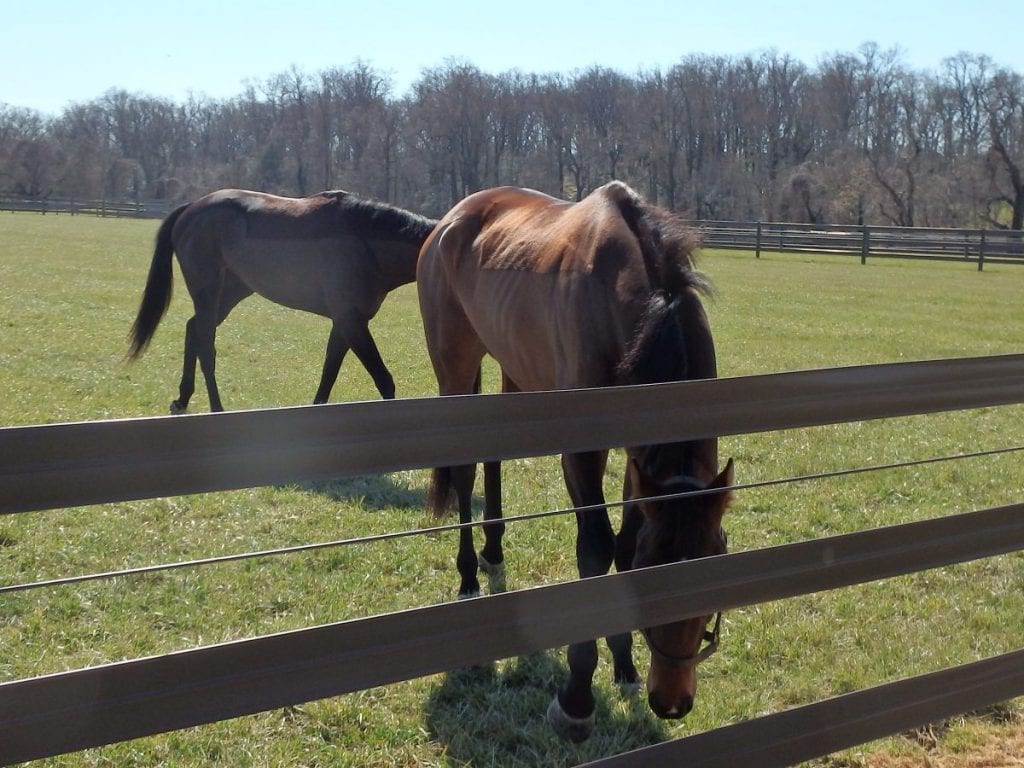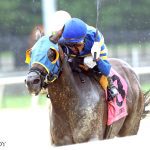MARYLAND-BRED BONUSES TRIMMED FOR REST OF 2020

The number of Maryland-breds racing in Maryland has ticked up in the last two months – at the precise moment that the fund which provides bonuses for them has gotten the Covid-19 squeeze.
The good news is those bonuses are getting paid out. Checks for racing through the end of July are expected to go out next week.
The less good: they’ll be smaller than what breeders have been accustomed to in recent years. The Maryland Racing Commission on August 27 accepted a recommendation from its Maryland-bred Race Fund Advisory Committee to trim the state-bred bonus program for the rest of 2020.
Bonuses for the breeders of Maryland-breds that finish one-two-three in the Free State are being cut from 30% to 25%, while those for the owners of Maryland stallions whose progeny finish in the top three locally will fall to 8.33%, down from 10%.
Likewise, stakes bonuses are being cut from 15% (breeder) and 5% (stallion) to 13.75% and 4.58%, respectively. (For more information on bonuses, click here).
The reductions will affect all races run from May 30, 2020 – the first day of live racing in Maryland following the break necessitated by Covid-19 – through the end of the year.
- Spa Selections 2025: Saratoga Picks July 13
 Picks and analysis for today’s key races from Saratoga.
Picks and analysis for today’s key races from Saratoga.
Those who earned bonuses from May 30 through July 31 should see them soon. They are expected to be mailed out no later than the end of next week.
“We look forward to getting Maryland-bred bonuses out to the people who have been supporting the industry in this difficult time,” said Maryland Horse Breeders Association executive director Cricket Goodall.
The Covid-19 pandemic has made life hard all over, including on the Maryland-bred Fund. The fund receives moneys from pari-mutuel wagering and from slot machine revenues.
But both racetracks and casinos were shut down from mid-March into late May, meaning that the Fund went without new revenue for more than two months.
And even once they opened, it took time for revenues to get back to normal levels. In June, for example, slot machines contributed about $1.357 million to racing purses; that was down from over $5.5 million in June 2019. The Maryland-bred Race Fund receives 11% of the moneys generated by slots for purses.
Fortunately for the Thoroughbred industry, those numbers have stabilized in recent weeks. July’s slots contribution to Thoroughbred purses was, at over $5.3 million, off less than six percent from 2019.
“It’s totally based on the revenue that we have,” David Hayden, chairman of the Maryland-bred Race Fund Advisory Committee, said Thursday. “Surprisingly, slots revenue is almost back to… what it was last year at this time. That’s great news.”
The Committee’s projections, which Hayden characterized as “conservative,” indicate that it should be able to handle a bonus structure at slightly more than 80 percent of prior levels for the rest of this year.
And for the future?
“Our goal is to get back to the 30,” Hayden said, while adding, perhaps unnecessarily in the midst of the craziest year anyone can remember, “There’s absolutely no guarantee.”
- Argyle and Thoroughbred racing in the 1830s
 Connected to Supreme Court justices and governors, the Maryland-bred Argyle became one of the best horses of the 1830s. His story.
Connected to Supreme Court justices and governors, the Maryland-bred Argyle became one of the best horses of the 1830s. His story.
That bonus structure, which kicked off in 2013, is widely credited with having bolstered the state’s breeding program. According to the Jockey Club. the number of mares bred by Maryland stallions rose from 649 in 2013 to 803 in 2019, a 23.7% increase. And the Maryland-bred foal crop increased from 443 in 2013 to 605 in 2019, increasing from 1.9 percent of all North American foals to 2.9 percent.
The program has also made racing in Maryland more attractive to owners of Maryland-breds – a kind of home-team bonus. In 2009, for example, Maryland-breds made 39% of their starts in Maryland. But by 2017, that number had risen to nearly 60%.
During the period from May 30 through the end of July, Maryland-breds constituted 42.5% of starters in Maryland, Hayden said. That was up from 39.8% for the full year 2019.
Goodall said that while the fund was fully paid up to recipients through the end of March – through, that is, the end of pre-pandemic racing – the revenue the bonuses provide will be a welcome sight for the state’s breeders.
“The breeding season seemed to function normally during the Covid times,” she said. “But many people don’t have revenue to pay bills, especially small breeders, so these bonuses become very important.”
LATEST NEWS














